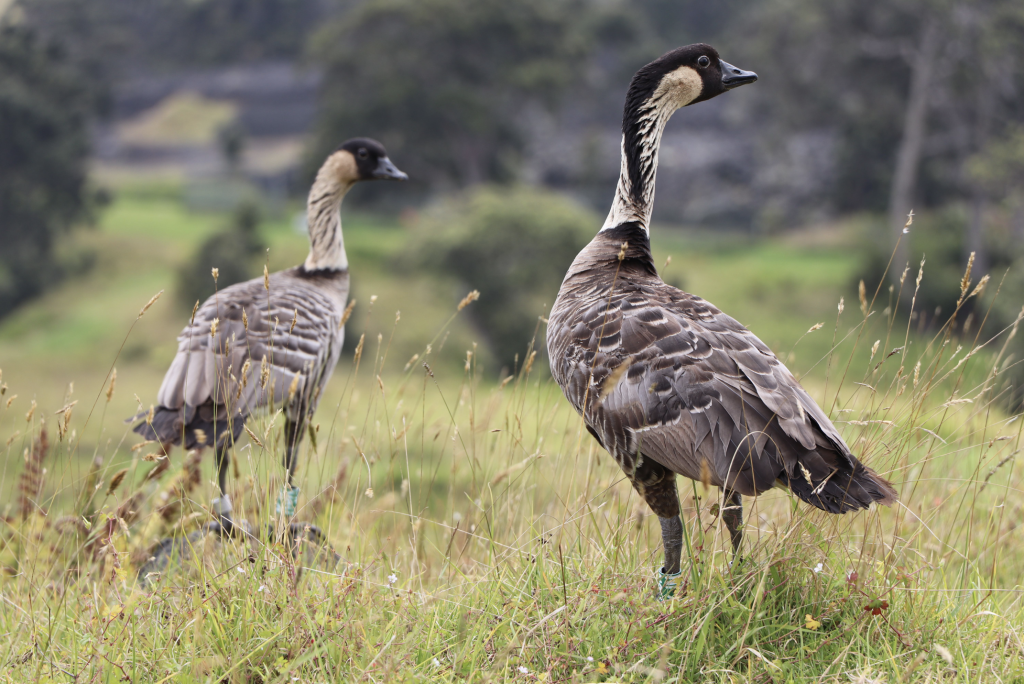State and federal officials remind public to be pono to Nēnē

The US Fish and Wildlife Service and the National Park Service are asking the public to be respectful of nēnē (Hawaiian goose) in the wild. Nēnē are the Hawaiʻi state bird and federally listed as threatened under the Endangered Species Act.
Nēnē were once found on nearly all the Hawaiian Islands; however, habitat loss, predation by non-native animals, disease, and human disturbance decimated nēnē populations. By 1950 it was estimated that less than 30 nēnē remained in the wild.
Nēnē have made strides towards recovery in recent years and were federally downlisted from endangered to threatened in 2019. Nēnē can be found on Hawaiʻi Island, Maui, and Kauaʻi, with Kauaʻi accounting for 60% of their population. The 2022 annual nēnē population survey estimated 3,862 statewide with 2,430 of those birds on Kaua‘i.
Since, 2003, Sept. 26 has been observed as Nēnē Awareness Day in Hawaiʻi. It helps serve as a reminder that even though nēnē populations have rebounded in recent years nēnē still need a lot of help.
The people of Hawaiʻi can help nēnē by:
Being responsible pet owners.
- Spay or neuter cats and keep them in doors.
- Keep dogs on leashed when hiking trails.
Do not feed nēnē.
- Feeding nēnē conditions them to be unafraid of humans and makes them more vulnerable to impacts of human activities.
- These activities include vehicle and golf ball strikes, as well as possible disturbance by hikers, hunters, and other outdoor recreationists.
- Nene may also be impacted by human activities through the application of pesticides and other contaminants, ingestion of plastics and lead, collisions with stationary or moving structures or objects, entanglement in artificial hazards.
- Feeding feral cats can also attract nēnē to areas with a higher flow of human traffic.
Drive slowly in known nēnē areas.
- Vehicle collision it the leading cause of death for adult nēnē. When driving through parks or areas where nēnē are known to gather, drive slowly and keep a look out for nēnē that may be crossing the street.









